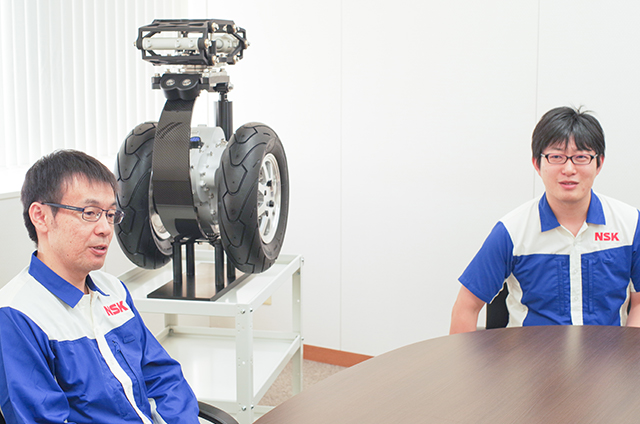
A modular revolution for autonomous EVs: introducing the cluster rover module
We asked Masafumi Hikida and Ryuho Morita from the Powertrain Technology Development Department, Automotive Technology Development Center, Automotive Business Division HQ, to tell us all about the Cluster Rover Module—how it works, how the development started, and why NSK’s research on this technology is so important.
A New Way to Turn: Driven by the Rotation Differential of Two In-Wheel Motors
What is the Cluster Rover Module?
MasafumiIt’s a technology for autonomous EVs, developed as a drive module intended mostly for box-shaped public transport and service vehicles, rather than consumer cars.
It has two features. First, the number of common drive modules can be adjusted for the size of the vehicle. This means that the same module can serve any size of vehicle. For example, we would use four modules for a small vehicle and eight for a large one.
Second, the functions for driving, steering, and braking are all integrated into the drive module itself, which is also equipped with functions for measuring loads and adjusting vehicle height.
RyuhoLet me tell you how it’s put together. First, the in-wheel motors that drive the two wheels and the brakes are integrated at the bottom. On top of that, there are carbon fiber plate springs and dampers to absorb shock, and a pantograph jack, which adjusts vehicle height, is fitted at the very top. The pantograph jack has a ball screw actuator. The turn of the screws lengthens or shortens the actuator, allowing vehicle height to be adjusted.






